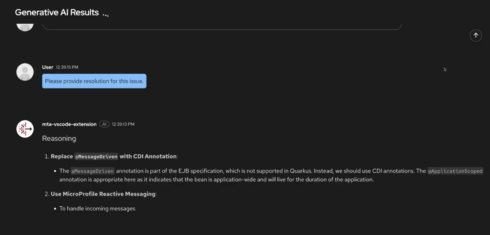
Red Hat is helping development teams speed up their workflows with the launch of a new portfolio of generative AI solutions called Red Hat Developer Lightspeed.
“As the business world moves toward more specialized, domain-specific AI assistants, the demand for raw generative power evolves to delivering trustworthy, reliable and contextually relevant assistance. Red Hat Developer Lightspeed addresses this need by providing purpose-built AI tools that are deeply integrated into the software development lifecycle,” the company wrote in an announcement.
Red Hat Developer Lightspeed has been integrated into both the Red Hat Developer Hub and the migration toolkit for applications (MTA).
In the Red Hat Developer Hub, it acts as an assistant to speed up non-coding tasks, like exploring application design approaches, writing documentation, generating test plans, and troubleshooting applications.
Developers can use any public or self-hosted LLM to power Red Hat Developer Lightspeed, providing more control over performance, cost, and data privacy.
This offering is currently in developer preview in the Developer Hub for customers with a Developer Hub or Advanced Developer Suite subscription.
In the migration toolkit, Red Hat Developer Lightspeed automates source code refactoring within the IDE. It leverages MTA’s static code analysis to understand migration issues and how to fix them, and also improves over time by learning what made past changes successful.
This version is now generally available for any customer with a Red Hat Advanced Developer Suite subscription.
Red Hat also announced the release of the latest version of the migration toolkit, MTA 8. In this update, the company added the ability to automatically generate the required deployment artifacts to replatform applications from Cloud Foundry to OpenShift.
“By combining the automated replatforming of MTA 8 with the AI-powered refactoring of Red Hat Developer Lightspeed, organizations have a more comprehensive toolkit to modernize their applications. This integrated approach helps developers to quickly adopt cloud-native technologies, while reducing the manual effort and complexity often associated with modernization projects,” Red Hat wrote in a blog post.






